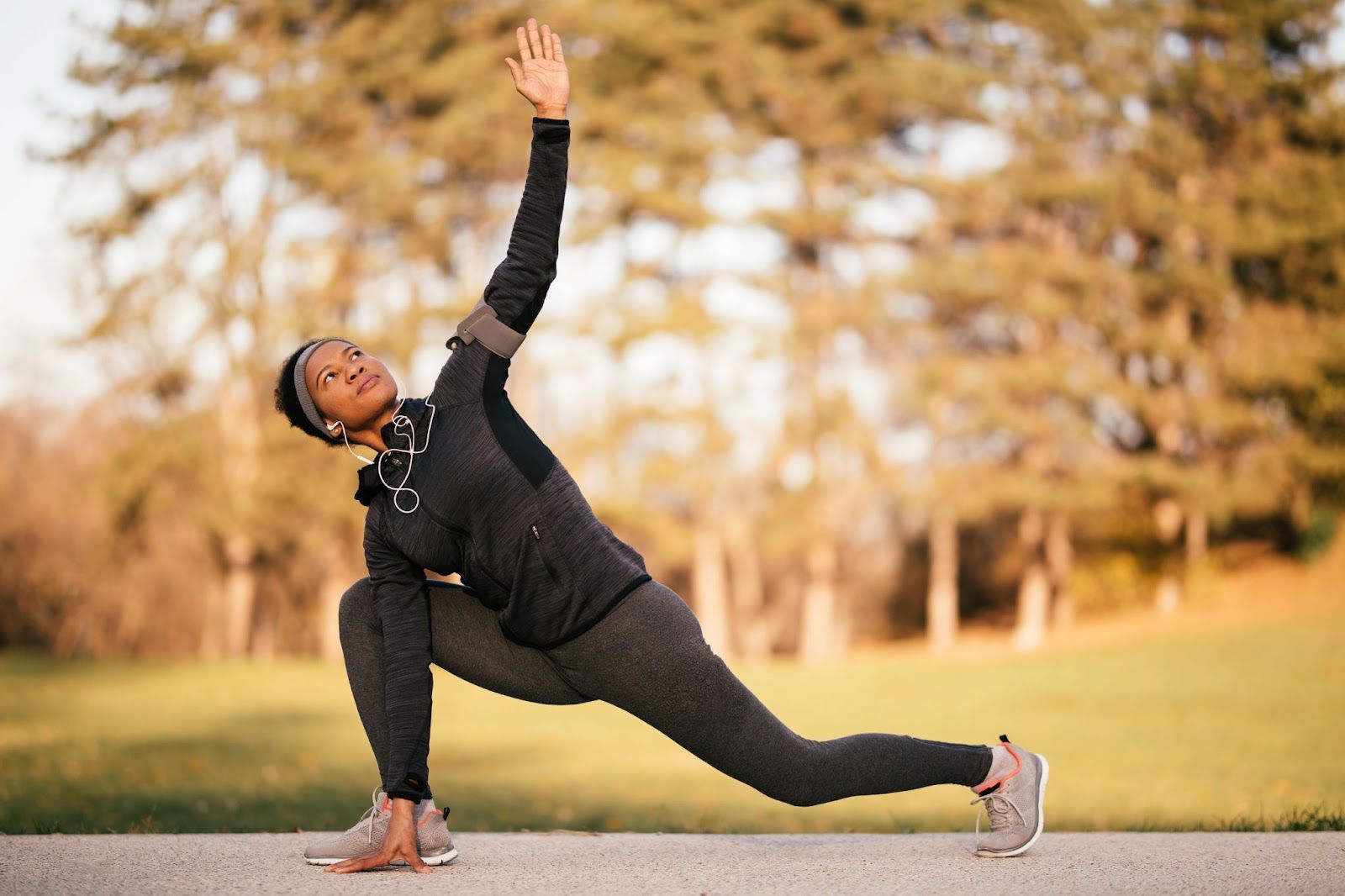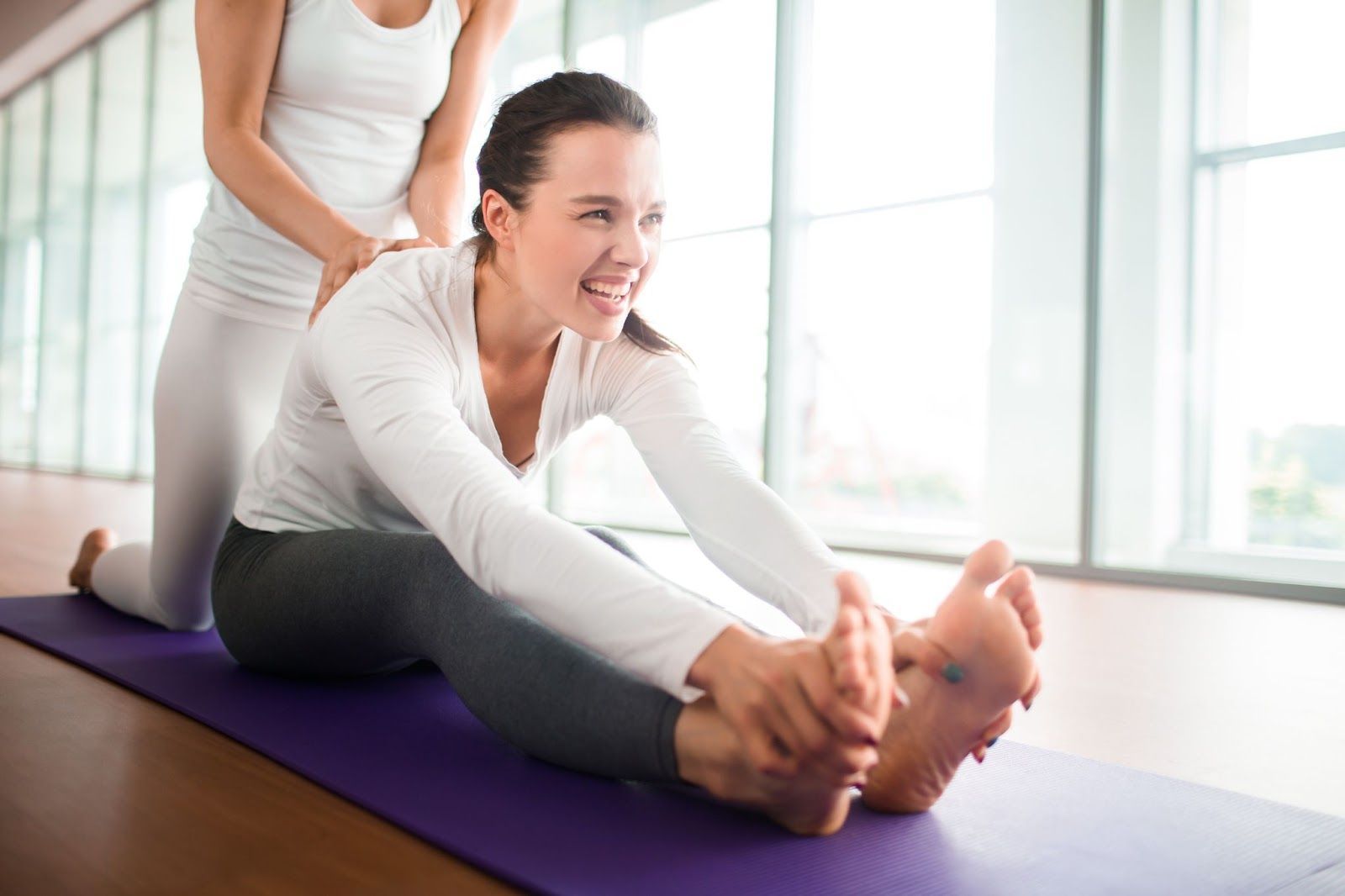Call us at (909) 674-0071
Incorporating Self-Stretching into Your Daily Routine: A Step-by-Step Approach
In the hustle and bustle of daily life, it's easy to overlook the importance of flexibility and mobility. We often prioritize tasks that seem more urgent, leaving little time for activities that promote physical well-being.
However, incorporating self-stretching into your daily routine can have profound benefits for both your body and mind.
In this article, we'll explore why stretching is essential, the benefits of a regular stretching routine, and provide a step-by-step approach to help you integrate self-stretching into your daily life.
Why Stretching Matters
Stretching is not just for athletes or fitness enthusiasts; it's essential for everyone, regardless of age or activity level. When we stretch, we lengthen and relax our muscles, which helps to improve flexibility, range of motion, and overall mobility. Here are some reasons why stretching should be a priority in your daily routine:
Improved Flexibility
Regular stretching can increase your flexibility, allowing you to move more freely and perform daily tasks with greater ease. If you stretch out regularly, you will see a significant improvement in your flexibility over time. Incorporating dynamic and static stretches into your routine can gradually increase your range of motion, making activities like bending, reaching, and twisting feel more effortless and natural.
Injury Prevention
Tight muscles are more prone to injury. By incorporating stretching into your routine, you can help prevent injuries by keeping your muscles flexible and resilient. Additionally, focusing on specific stretches that target vulnerable areas for your sport or activity can further reduce the risk of strains, sprains, and other common injuries, ensuring you stay healthy and active.
Reduced Muscle Tension
Stretching helps to release tension in the muscles, reducing stiffness and soreness. This is why it is recommended to do stretching as part of your routine when working out. By incorporating stretching exercises that target areas prone to tension buildup, such as the neck, shoulders, and lower back, you can alleviate discomfort and improve overall muscle relaxation, enhancing your post-workout recovery and comfort.
Better Posture
Tight muscles can contribute to poor posture, leading to discomfort and pain. Stretching can help to correct imbalances and improve posture. But you have to make sure that you do it properly so your posture can be corrected. By regularly incorporating stretches that focus on opening up the chest, lengthening the spine, and releasing tension in the hips and shoulders, you can gradually improve your alignment and maintain a more upright and balanced posture throughout the day.
Stress Relief
Stretching has a calming effect on the body and mind, helping to reduce stress and promote relaxation. You can do it as a meditation if you want to. Taking the time to stretch, focus on your breath, and let go of tension can create a sense of mindfulness and presence, allowing you to unwind and recharge both physically and mentally after a long day or intense workout. Incorporating stretching into your daily routine can serve as a valuable tool for managing stress and enhancing overall well-being.
A Step-by-Step Approach to Self-Stretching
Now that we understand the importance of stretching let's explore how you can incorporate it into your daily routine. Follow these simple steps to develop a consistent stretching practice:
Step 1: Set Aside Time
The first step is to carve out time in your day dedicated to stretching. It doesn't have to be a large chunk of time; even just 10-15 minutes can make a significant difference. Find a time that works best for you, whether it's first thing in the morning, during your lunch break, or in the evening before bed.
Step 2: Create a Comfortable Space
Choose a quiet, comfortable space where you can stretch without distractions. Ideally, you want a room with enough floor space to move freely. You may also want to use a yoga mat or a soft surface to cushion your joints.
Step 3: Warm-Up
Before you begin stretching, it's essential to warm-up your muscles to reduce the risk of injury. You can do this by engaging in some light cardio exercises such as jogging in place, jumping jacks, or cycling on a stationary bike for 5-10 minutes.
Step 4: Focus on Major Muscle Groups
When stretching, focus on major muscle groups such as the calves, hamstrings, quadriceps, hips, lower back, chest, shoulders, and neck. Hold each stretch for 15-30 seconds, breathing deeply and evenly throughout. Avoid bouncing or jerking movements, as this can cause strain.
Step 5: Listen to Your Body During Stretching
Pay attention to how your body feels during stretching. You should feel a gentle pull or tension in the muscle, but it should not be painful. If you experience any pain, ease off the stretch immediately. Stretching should feel good and relaxing, not uncomfortable.
HStep 6: Incorporate Variety
To keep your stretching routine interesting and effective, incorporate a variety of stretches targeting different muscle groups. You can try static stretches, dynamic stretches, yoga poses, or mobility exercises. Experiment with different techniques to find what works best for you.
Step 7: Be Consistent
Consistency is key when it comes to stretching. Aim to stretch at least 3-5 times per week, if not daily, to experience the full benefits. Make it a habit by incorporating stretching into your daily routine, just like brushing your teeth or eating meals.
If you don’t do it consistently, there is a chance that you might end up giving up eventually.
Step 8: Cool Down
After you've completed your stretching routine, take a few minutes to cool down and relax. You can do some gentle stretches or simply lie down and focus on your breathing. This will help to bring your heart rate down and promote a sense of calmness and relaxation.
For those who exercise regularly, this is the most relaxing moment for them.
Step 9: Stay Hydrated
Drink plenty of water before and after stretching to keep your muscles hydrated and supple. Hydration is essential for maintaining flexibility and preventing muscle cramps.

Not hydrating enough is one of the most common mistakes that people commit, not just when stretching but exercising in general. This is why muscle cramps are so common.
Step 10: Asses Your Body
Finally, listen to your body and adjust your stretching routine as needed. If you need more or less stretching on a particular day, honor those feelings and modify your routine accordingly.
Remember, the goal is to promote overall well-being and flexibility, so do what feels right for you. If you feel that what you are doing is too much then you should tone it down.
Invest in Self-Stretching Practices Today
Incorporating self-stretching into your daily routine is a simple yet powerful way to improve flexibility, mobility, and overall physical well-being. Following the step-by-step approach outlined in this article, you can develop a consistent stretching practice that will benefit your body and mind in the long run.
So why wait? Start stretching today and reap the rewards of a more flexible and resilient body.
If you want to learn more about stretching, go and visit the StretchX blog now.
Certified Stretch Instructor
Phone: (909) 674-0071
Business Hours: Monday to Friday: 8am - 7pm • Saturday: 7am - 1pm
All Rights Reserved | StretchX




